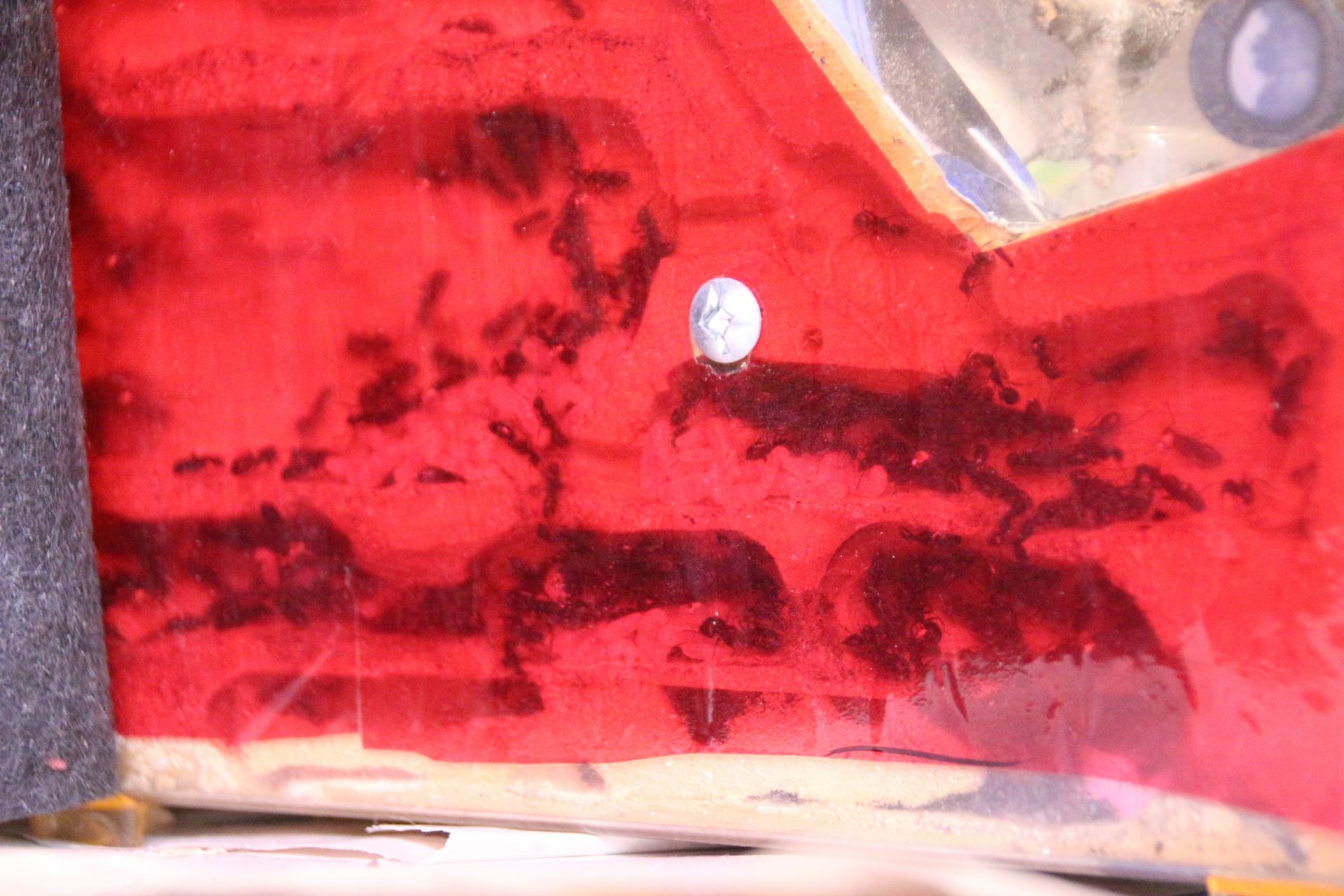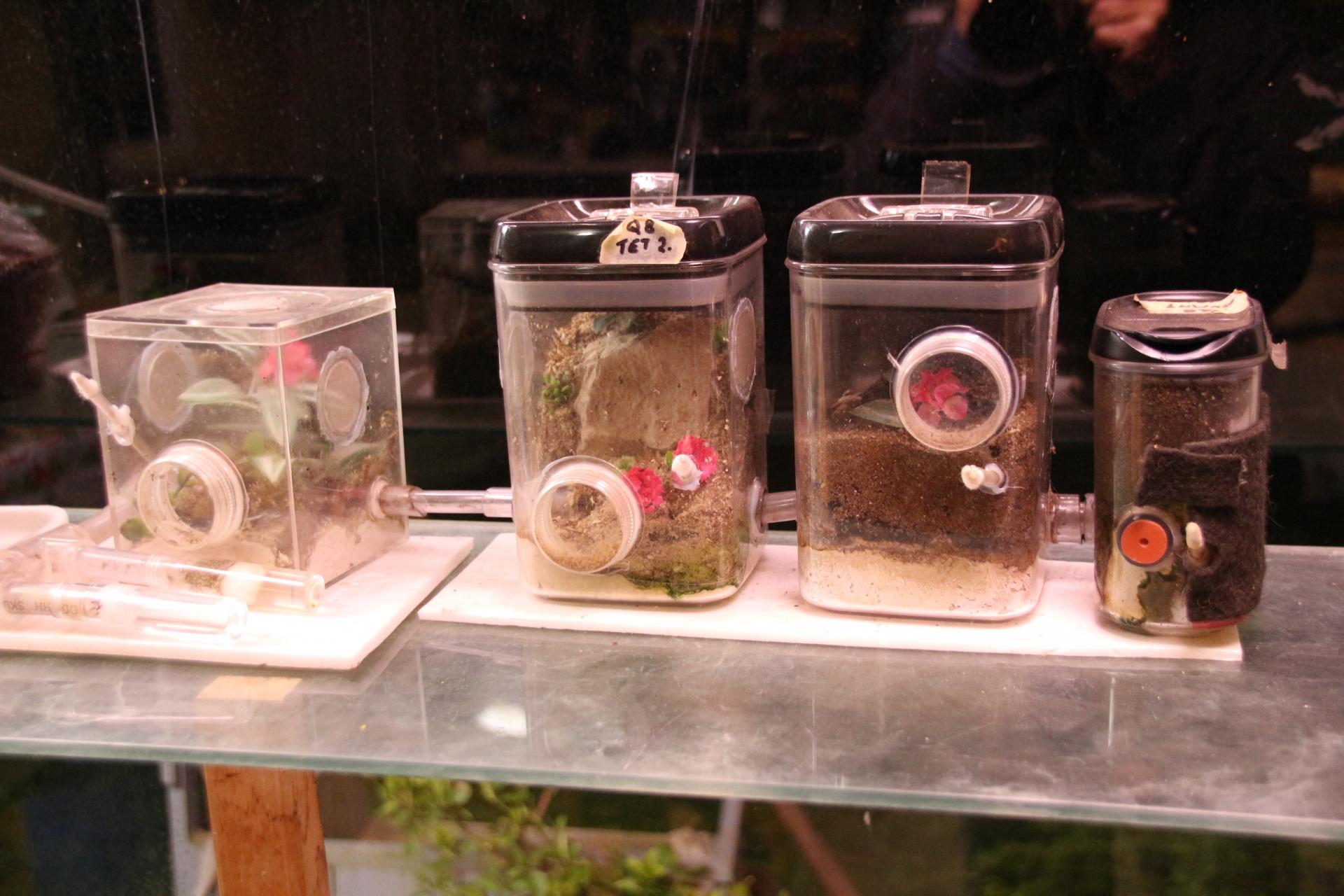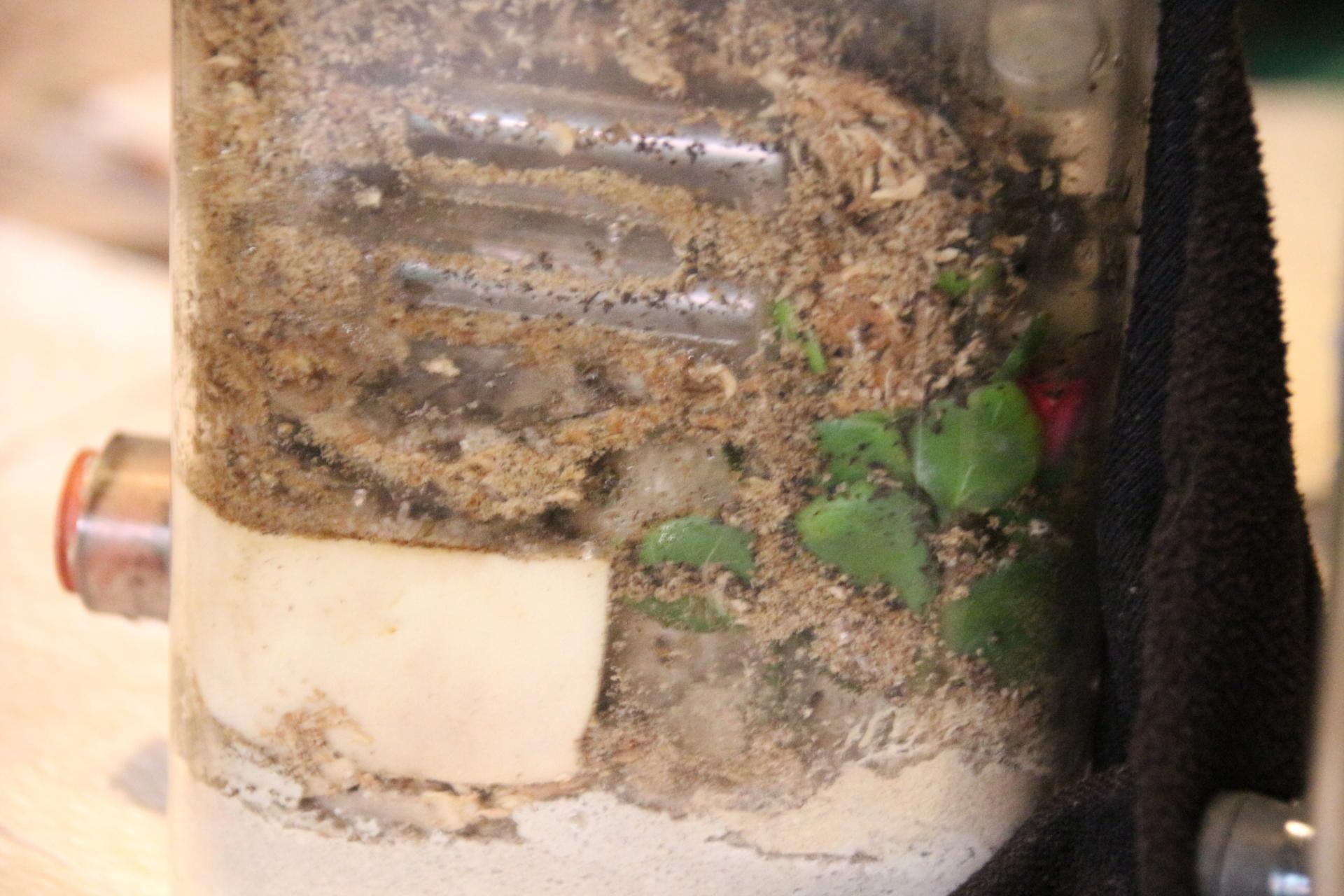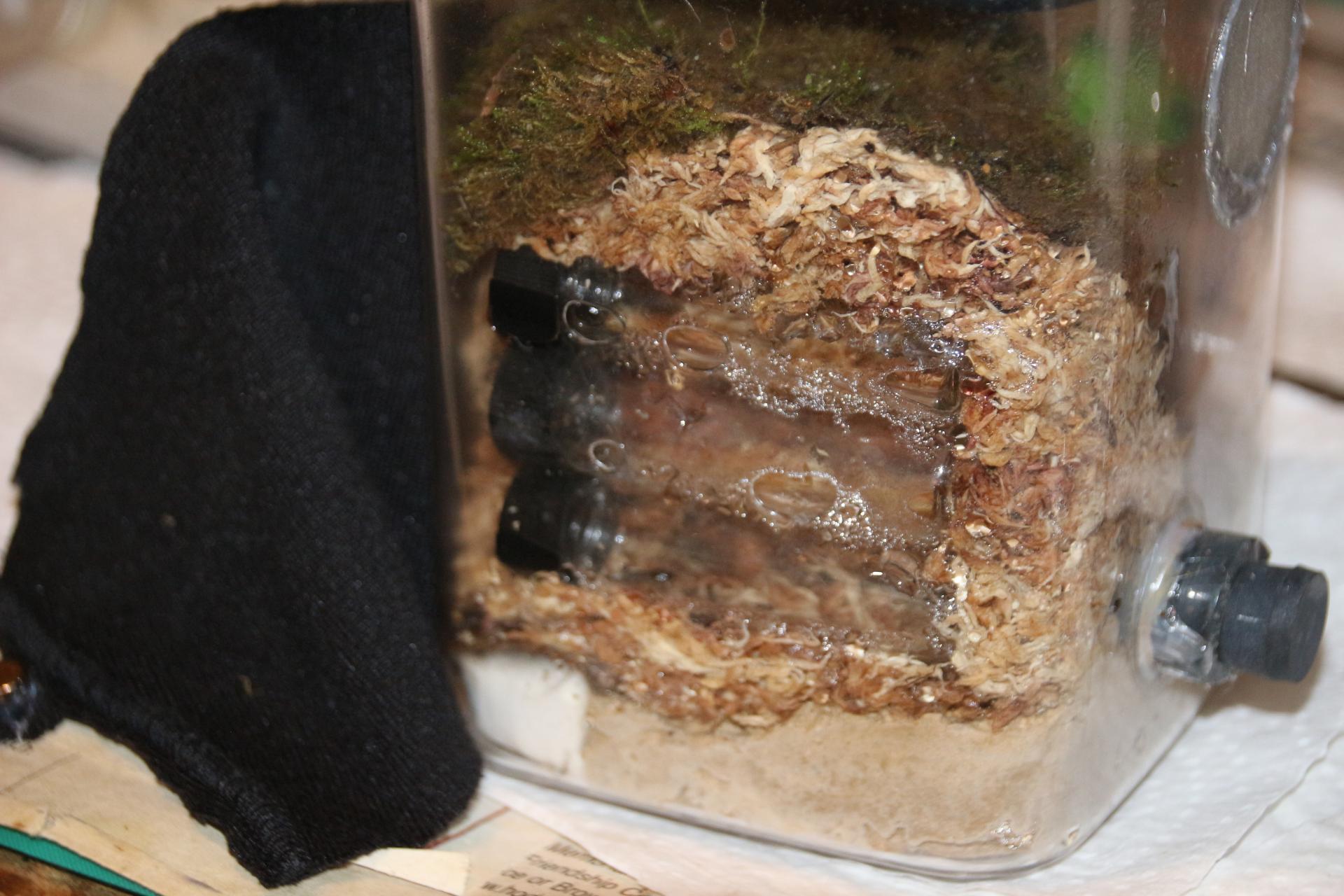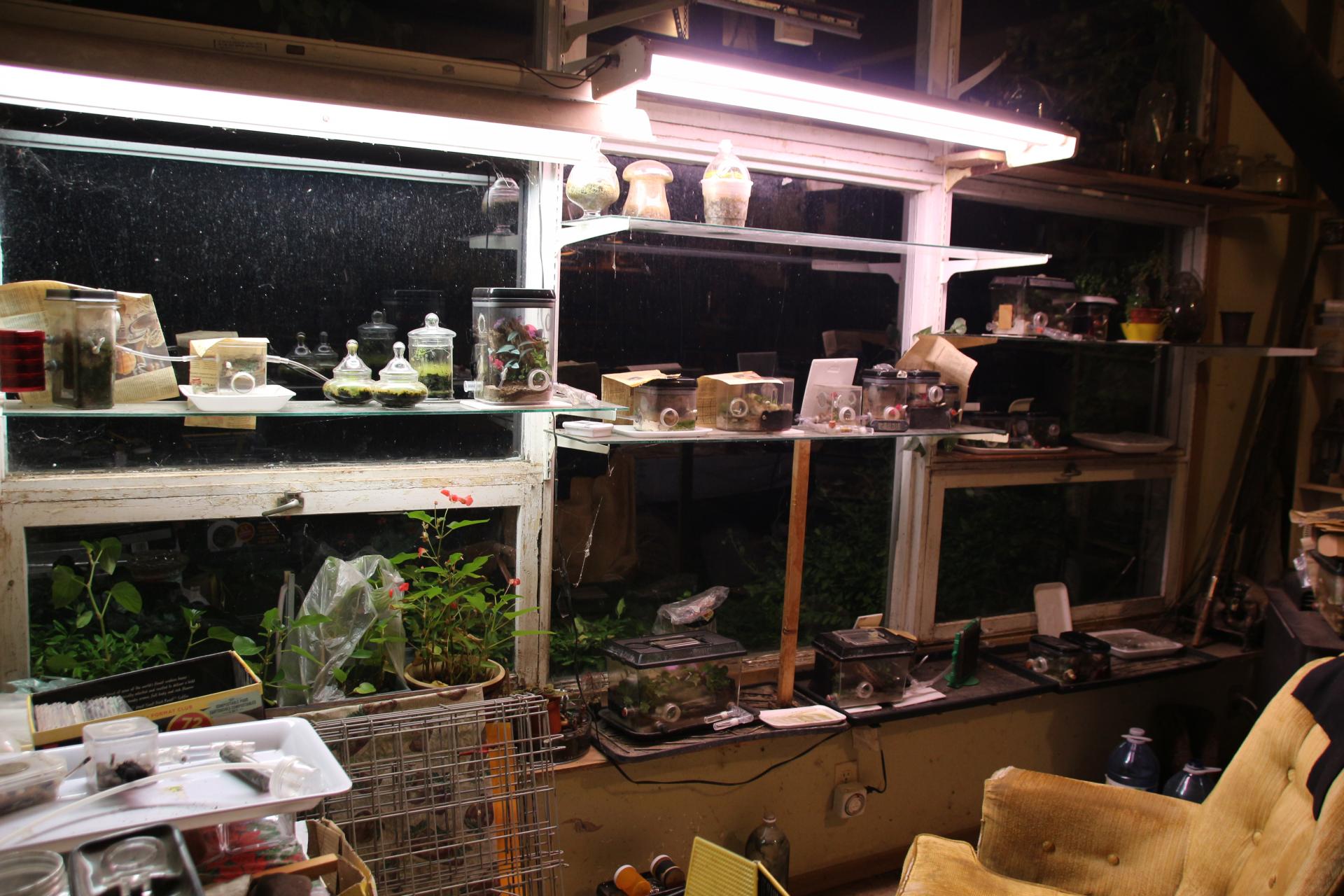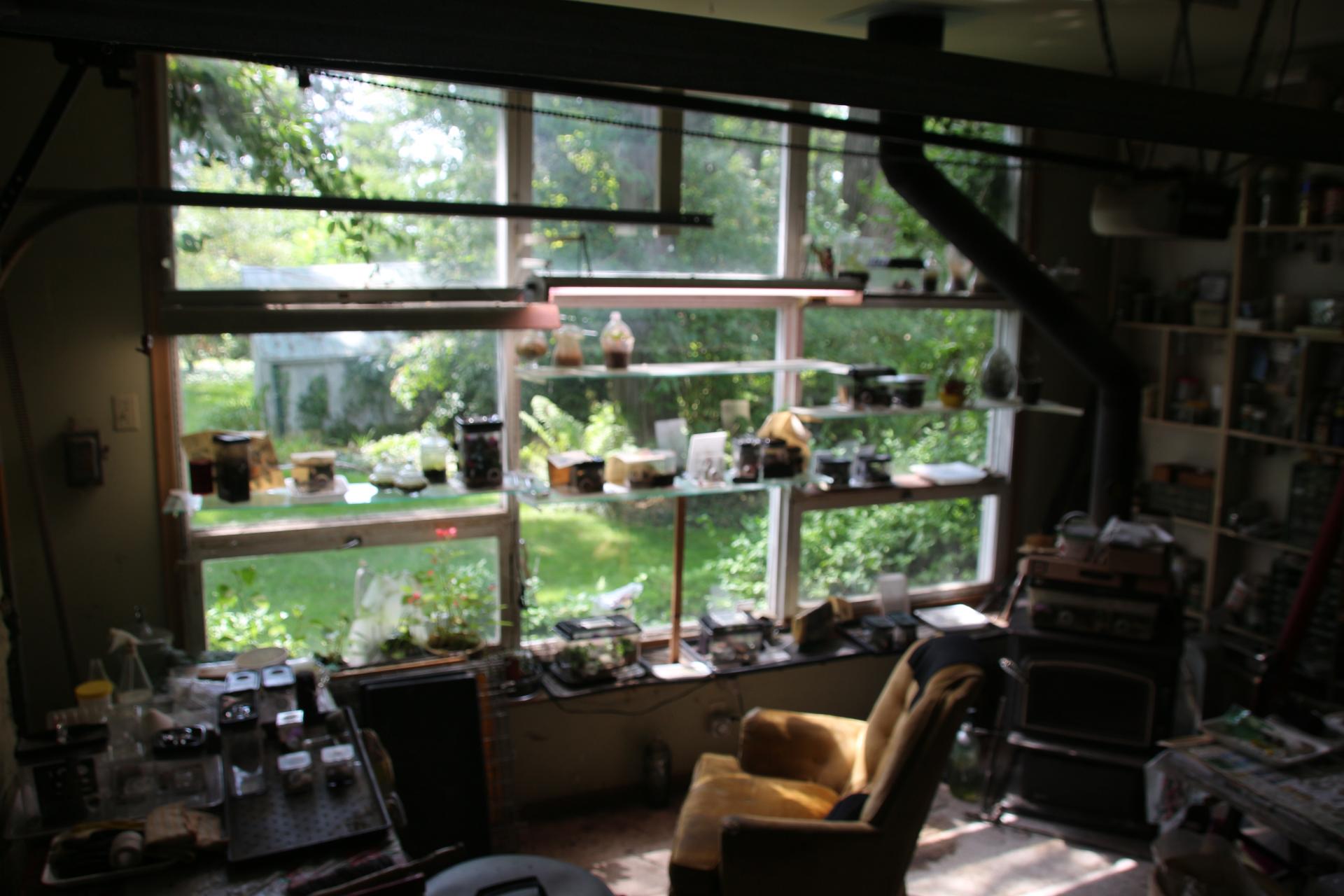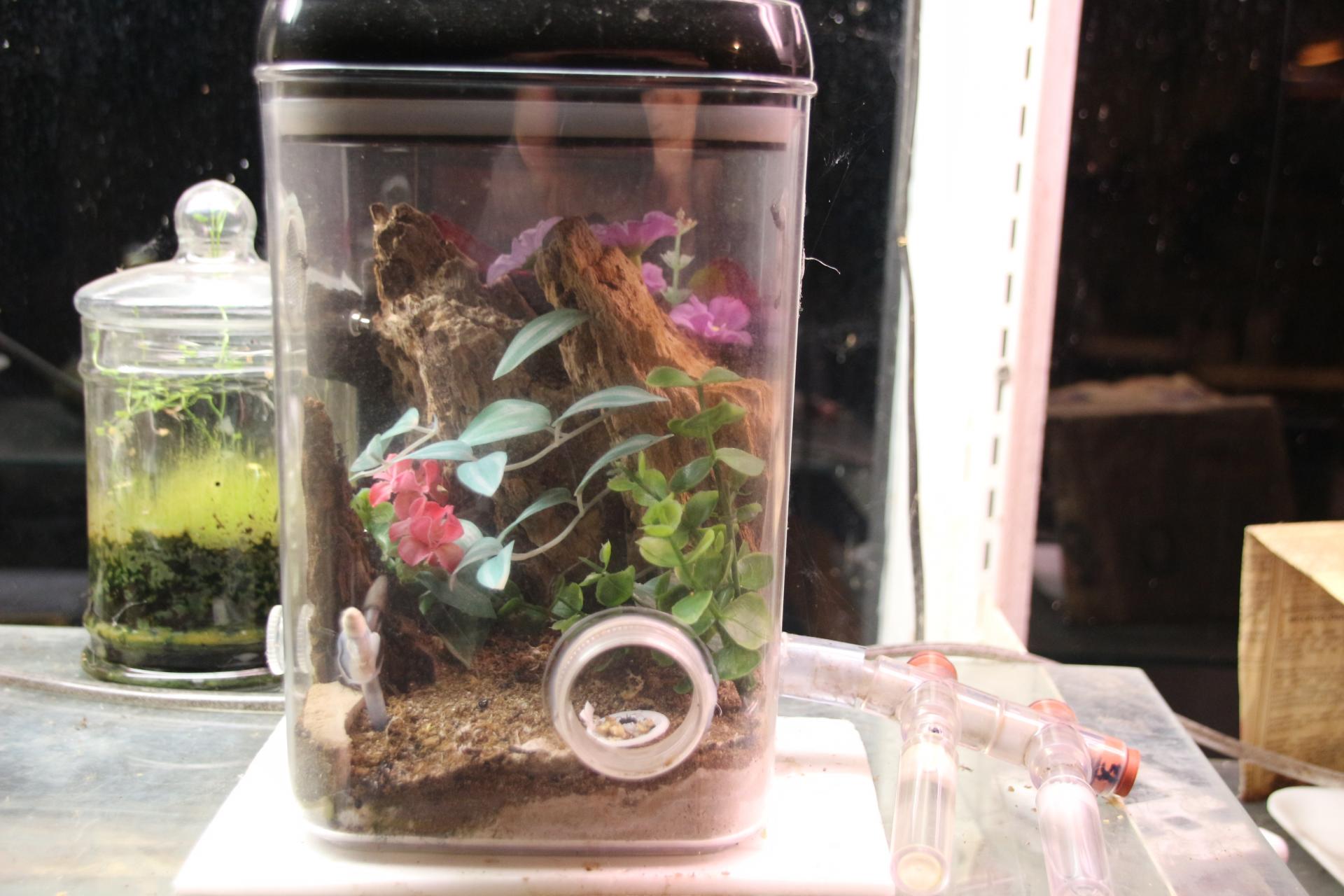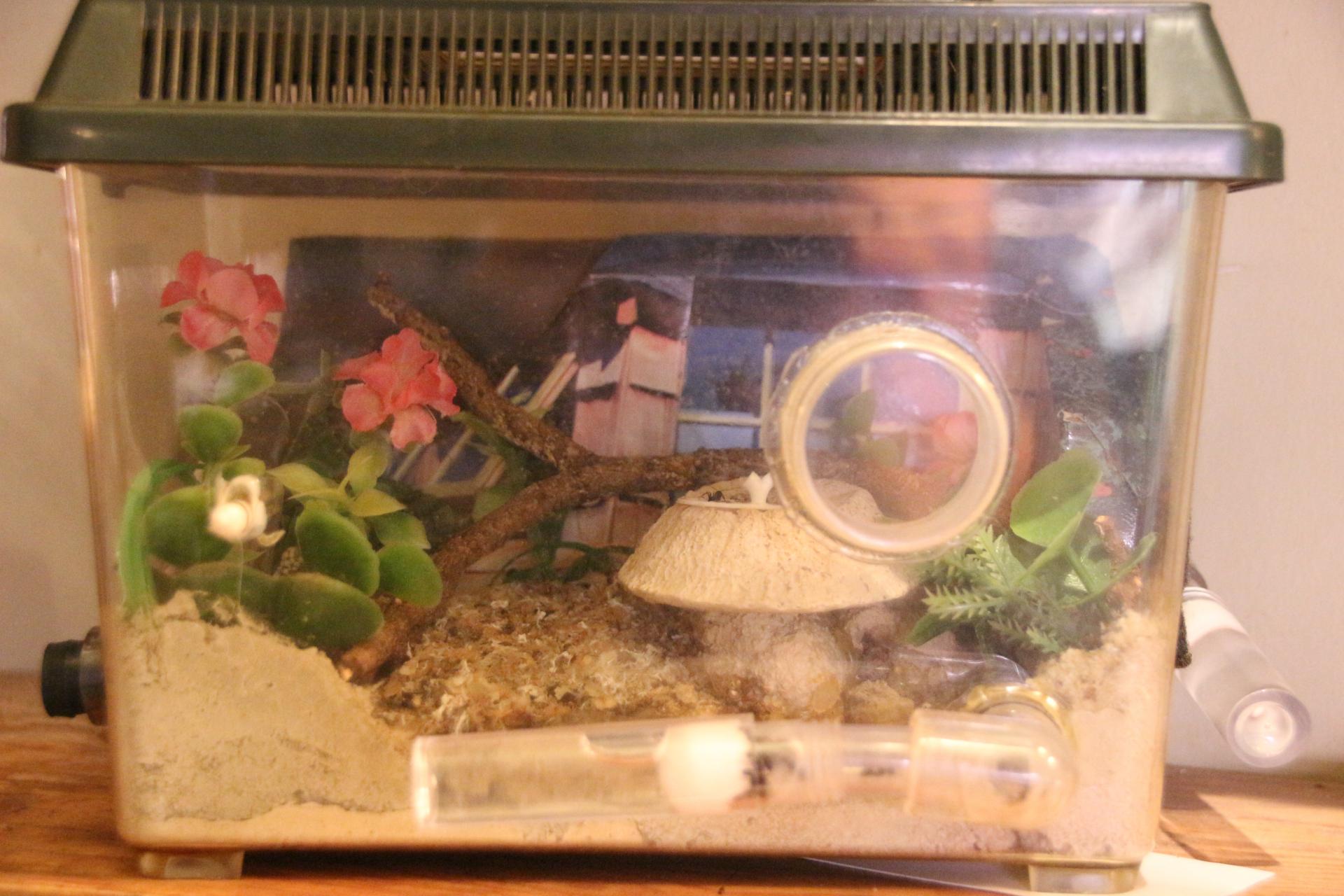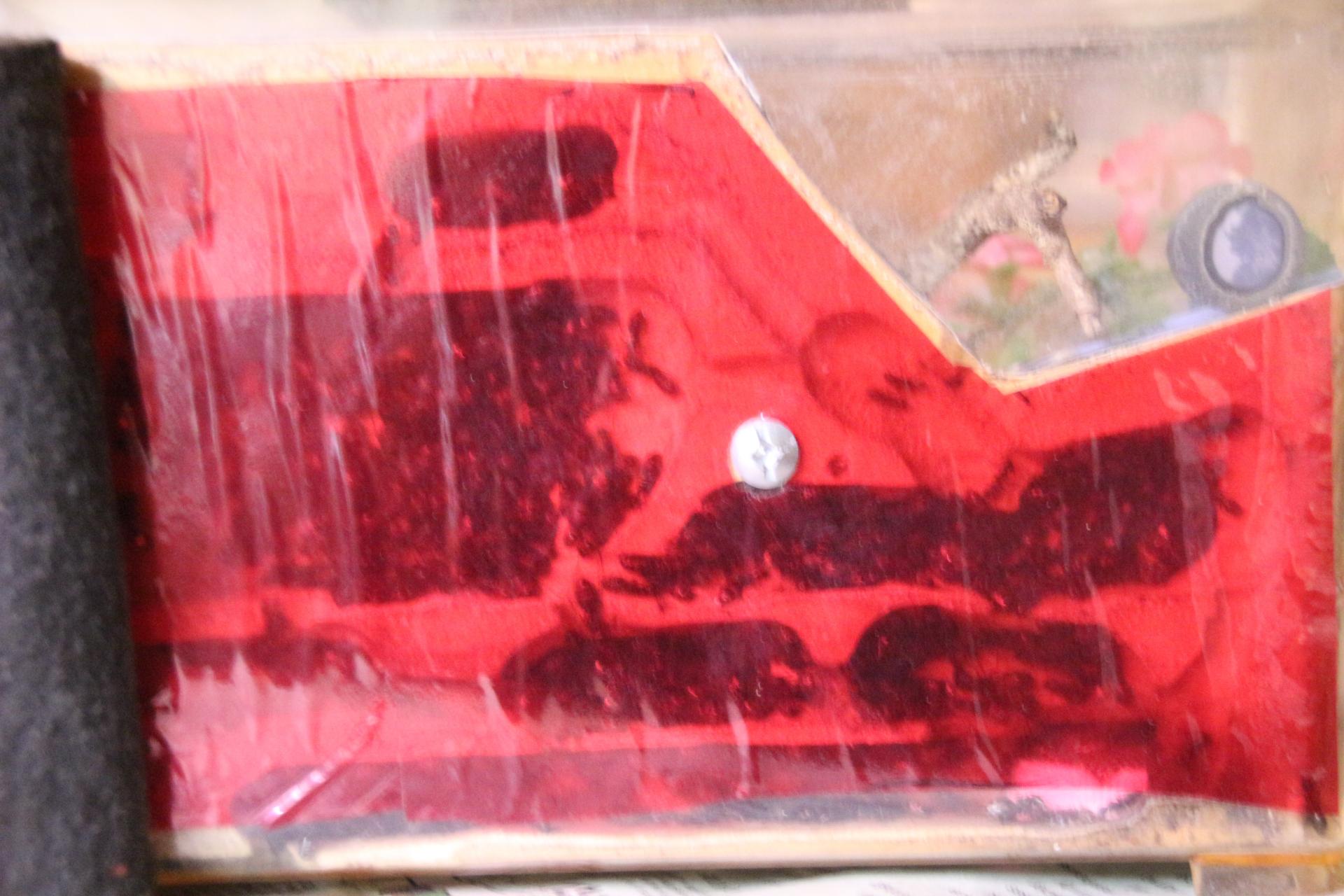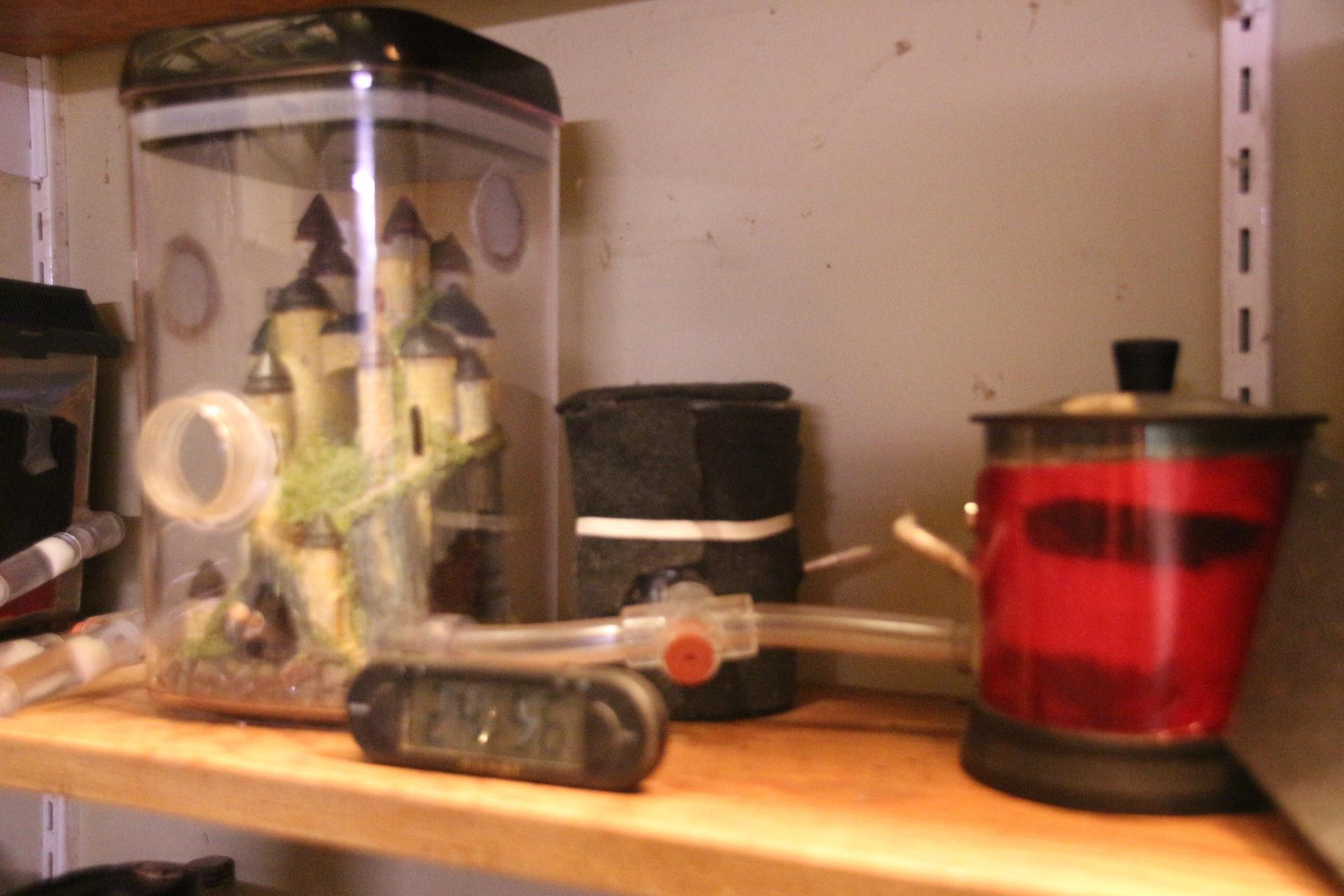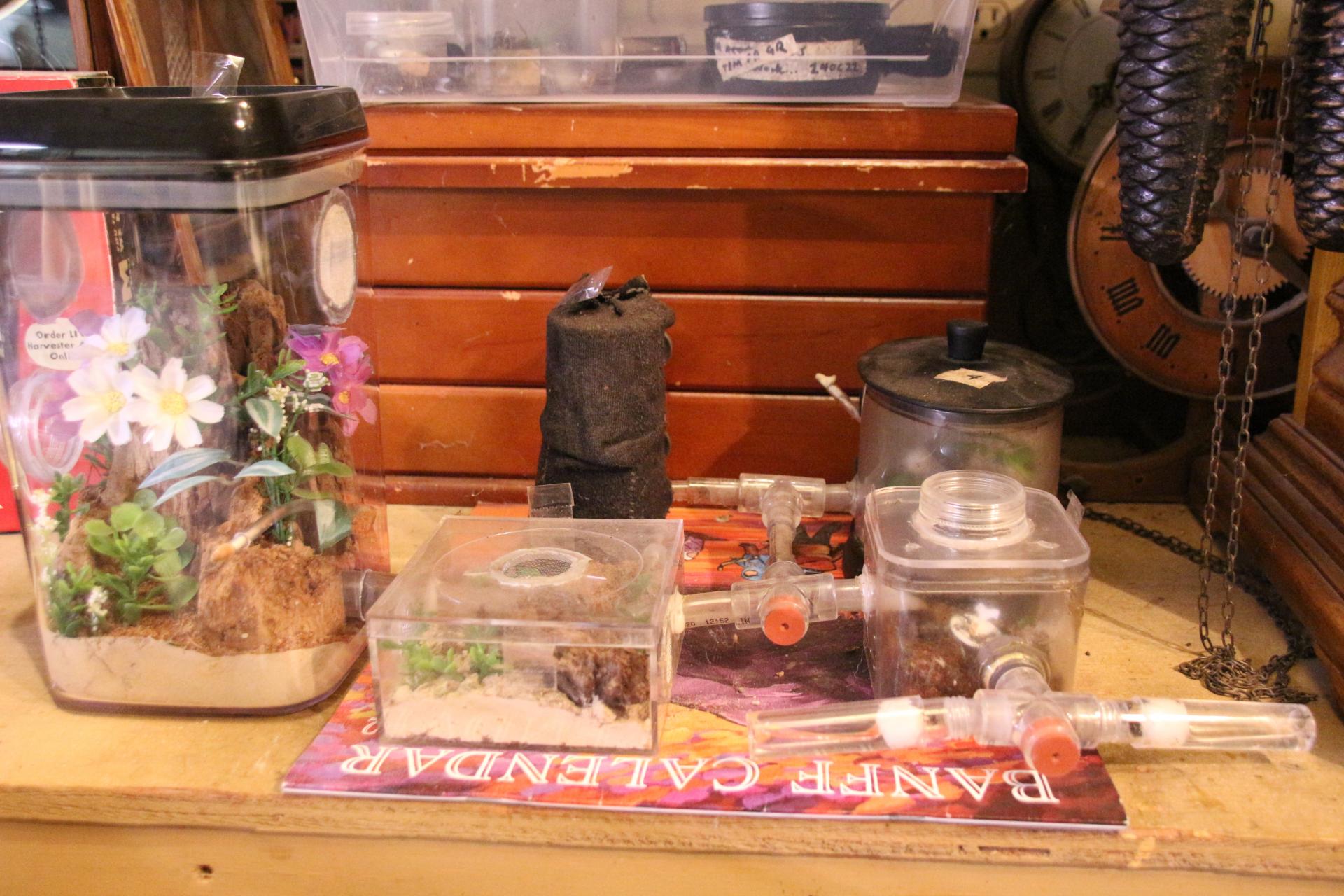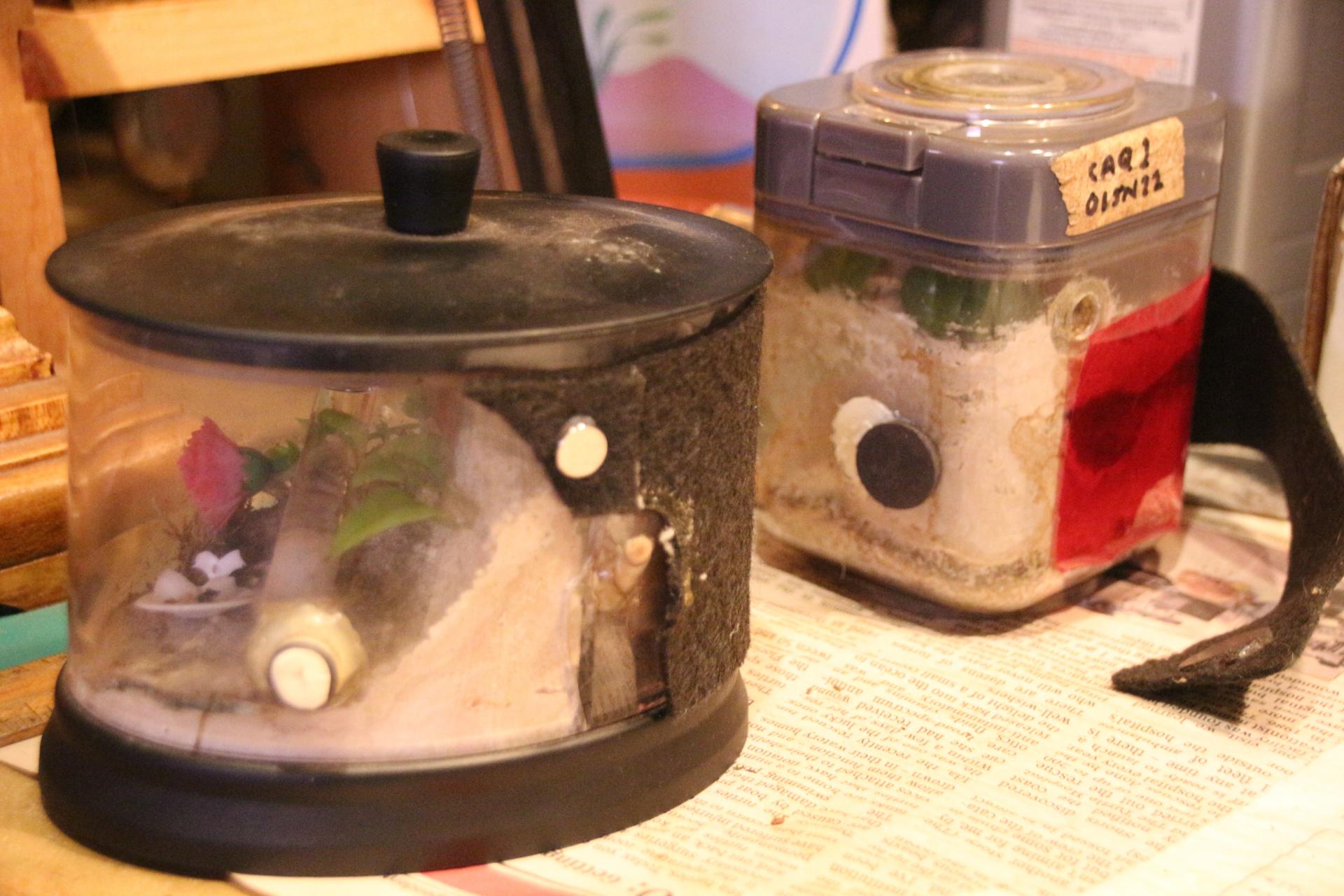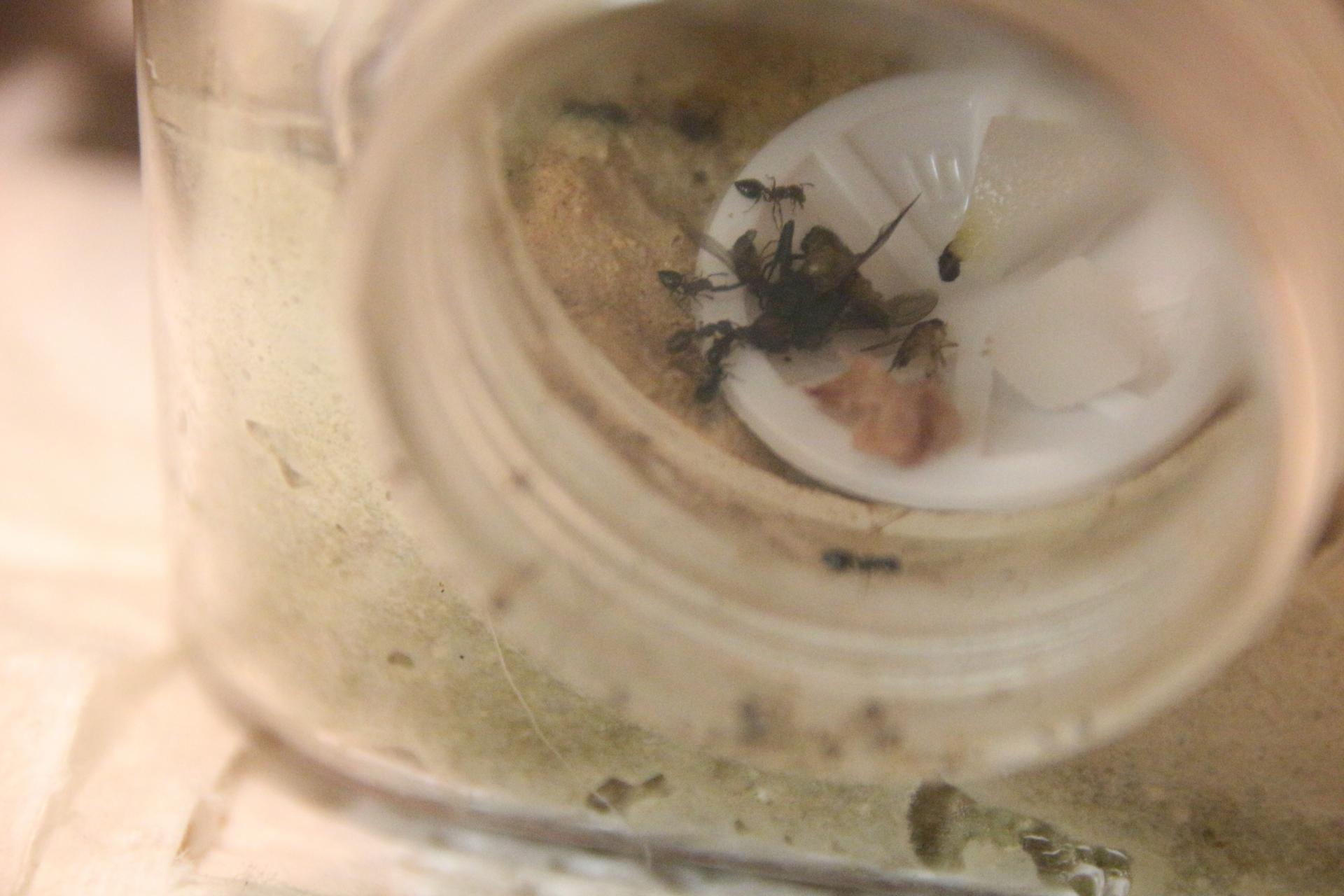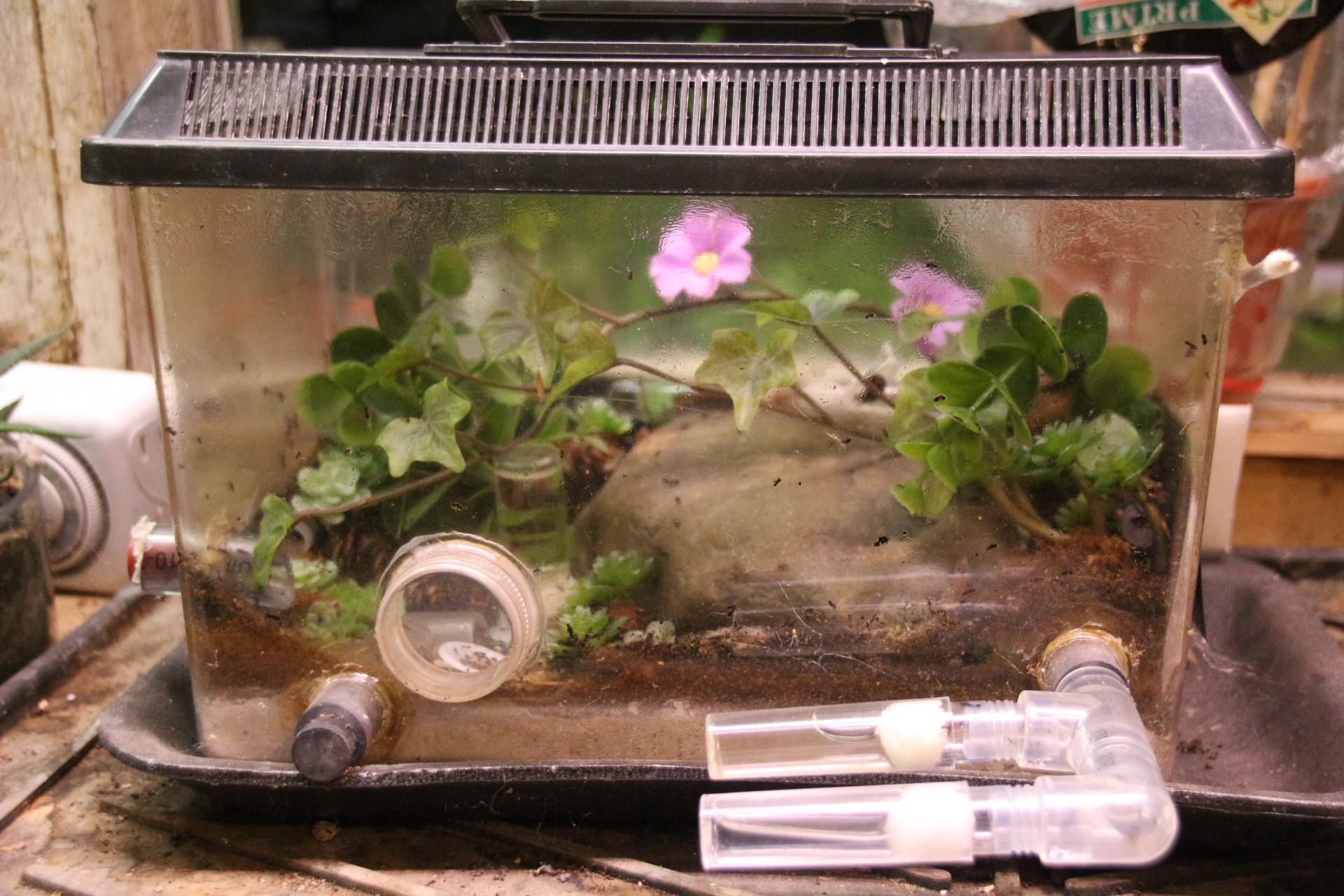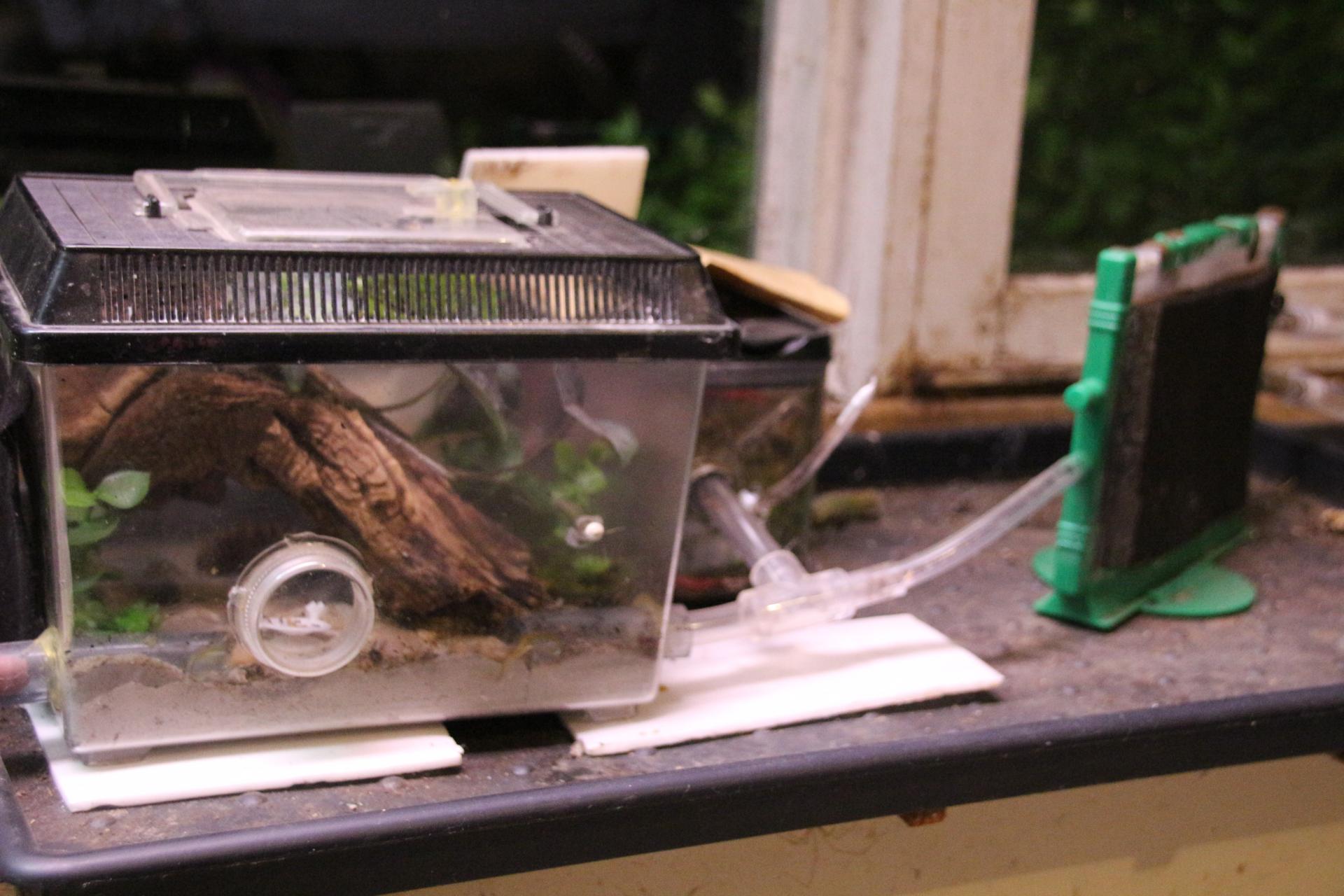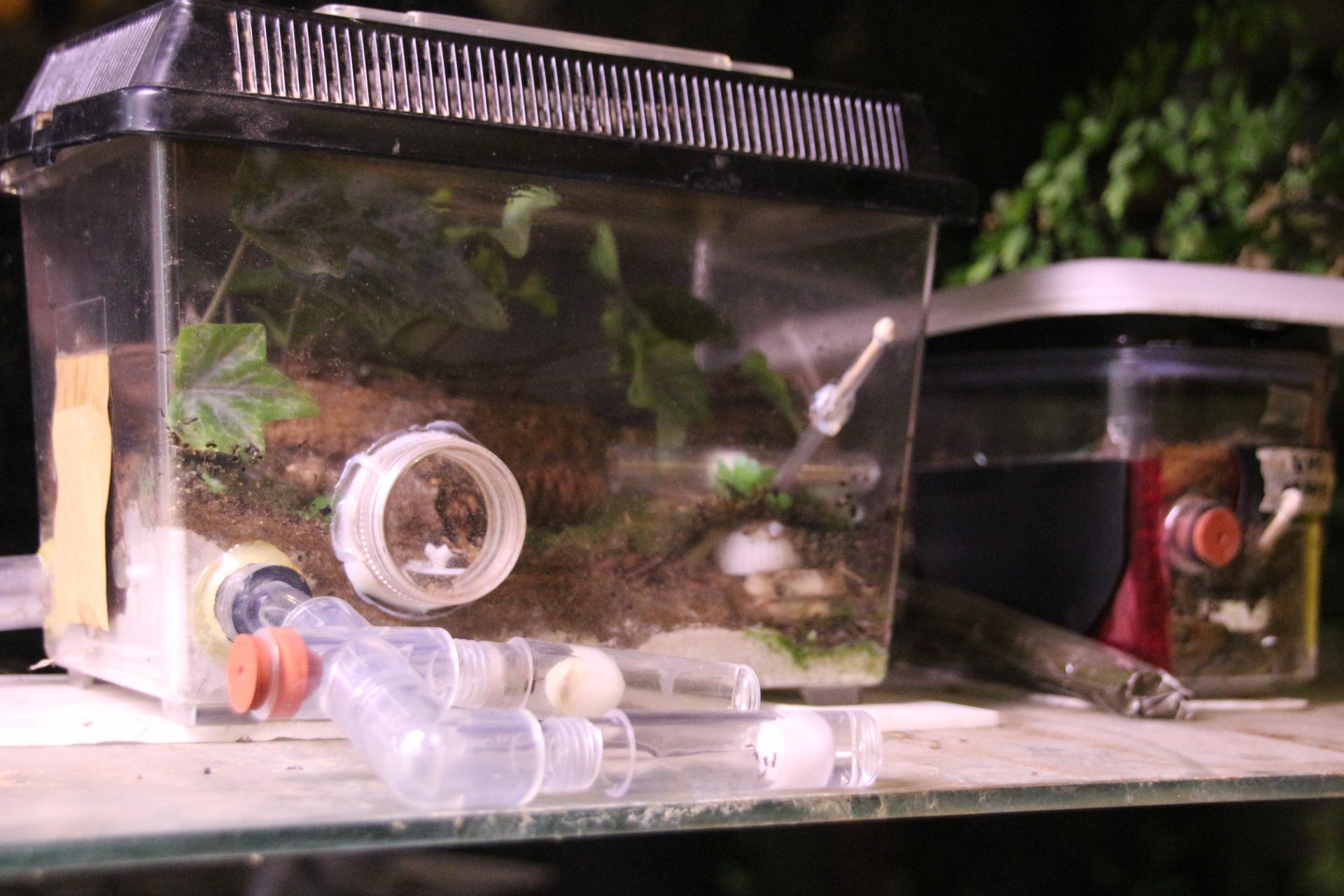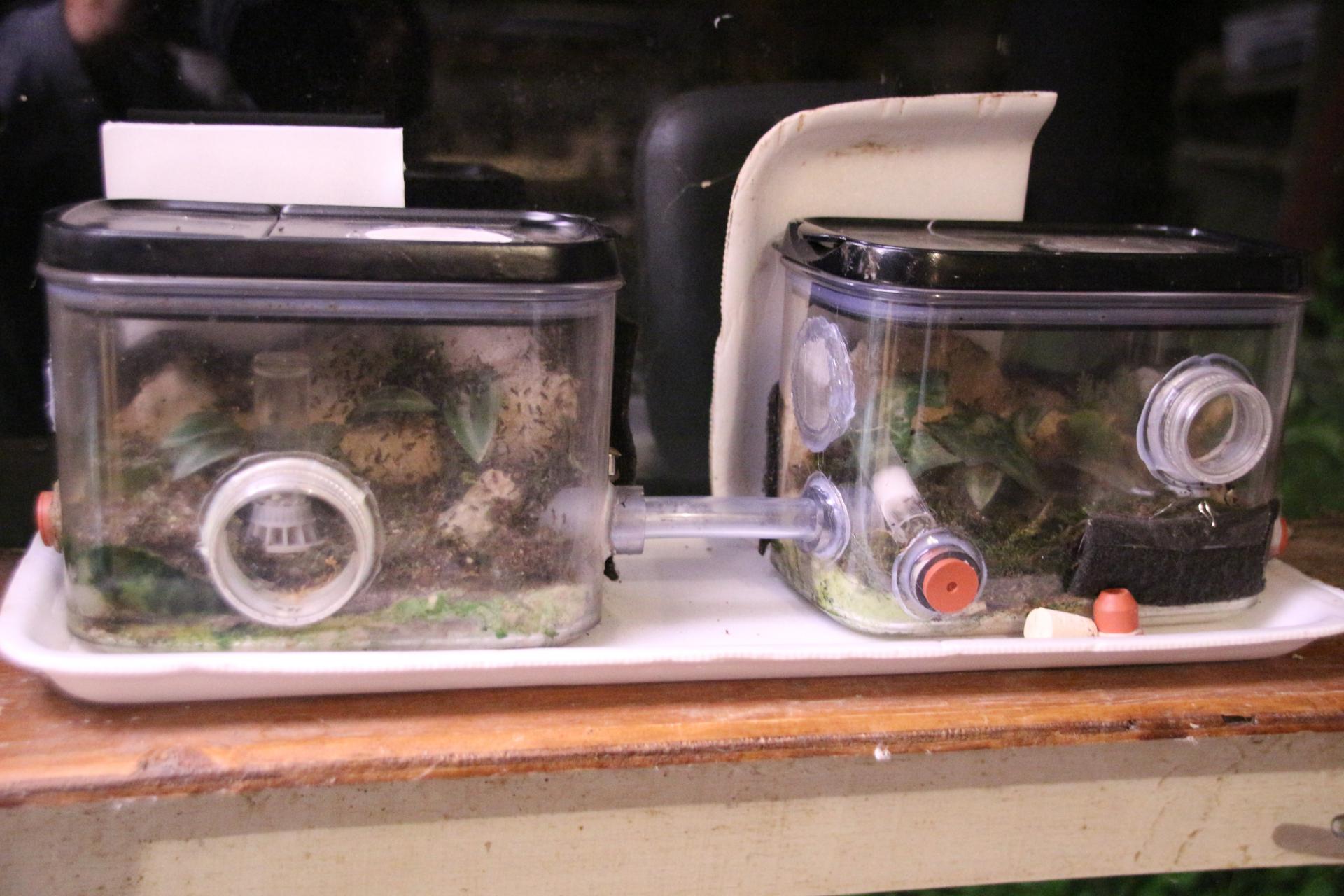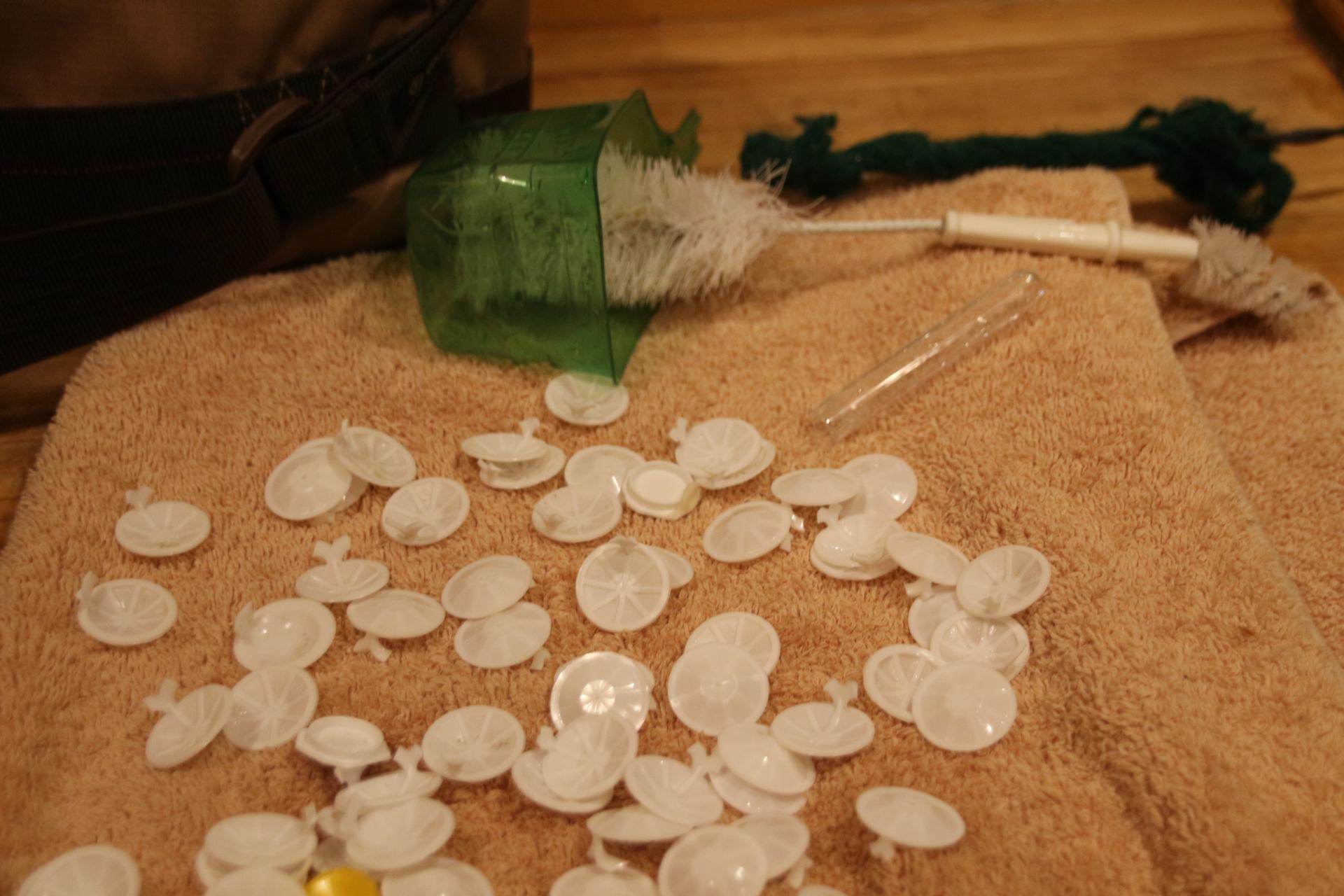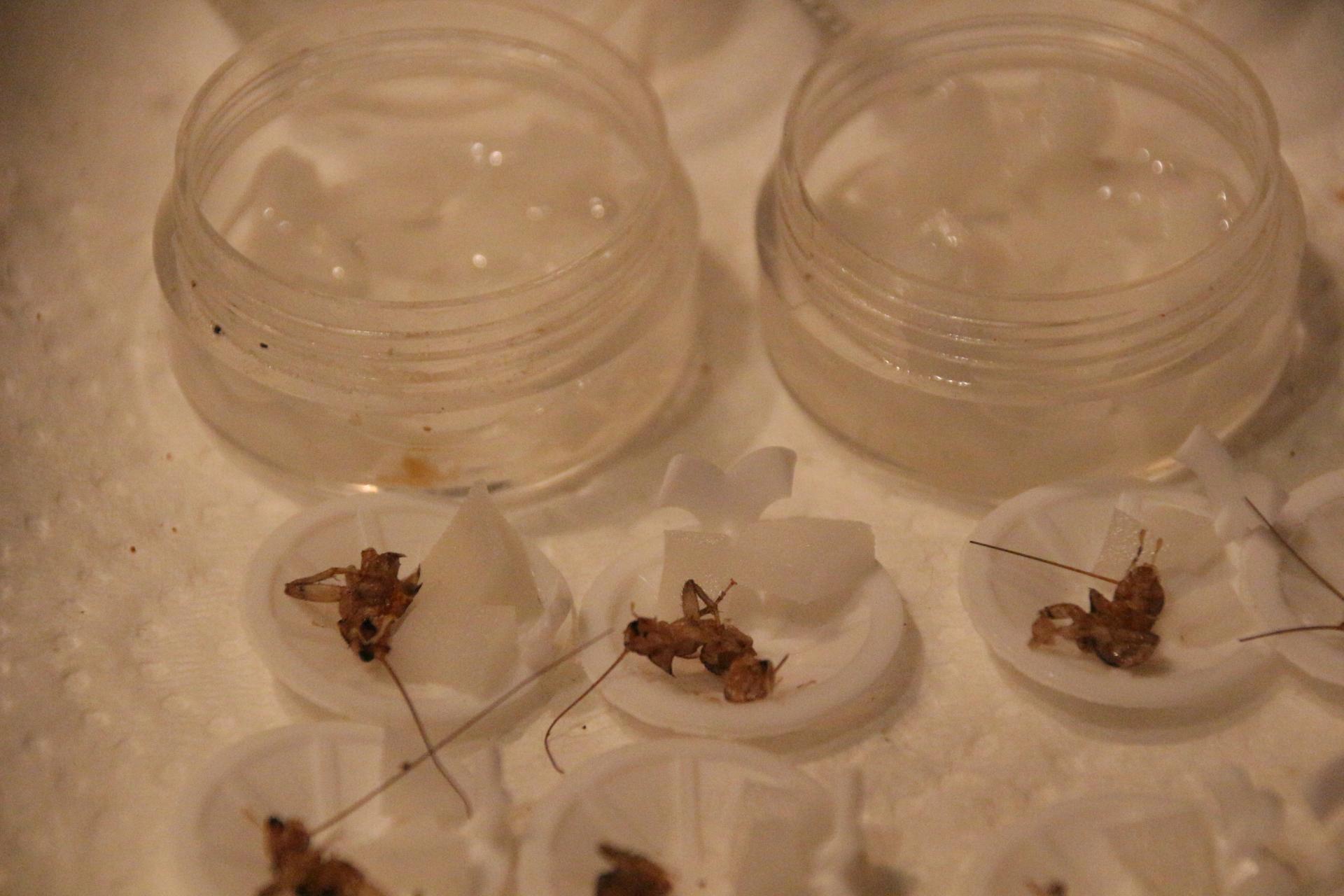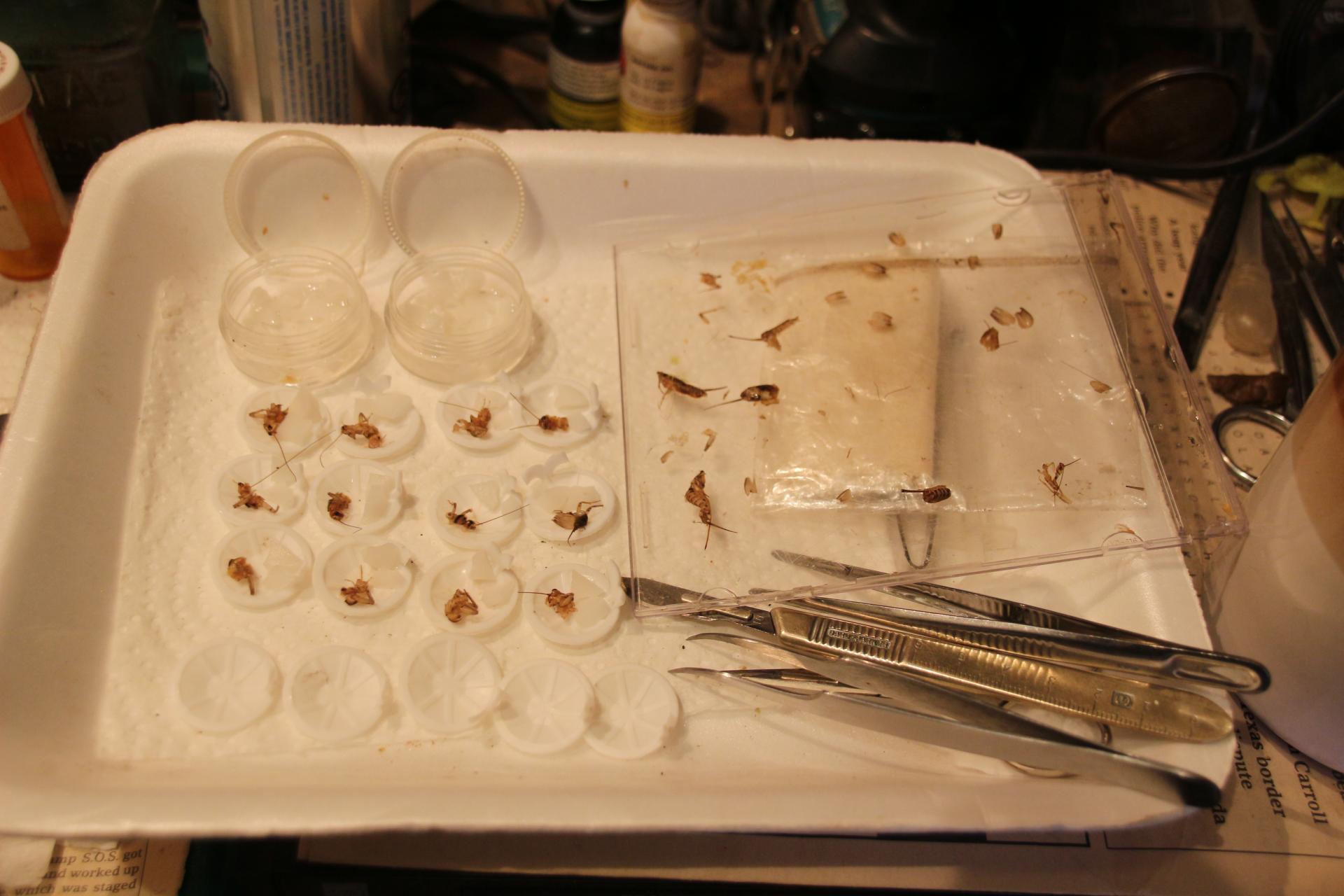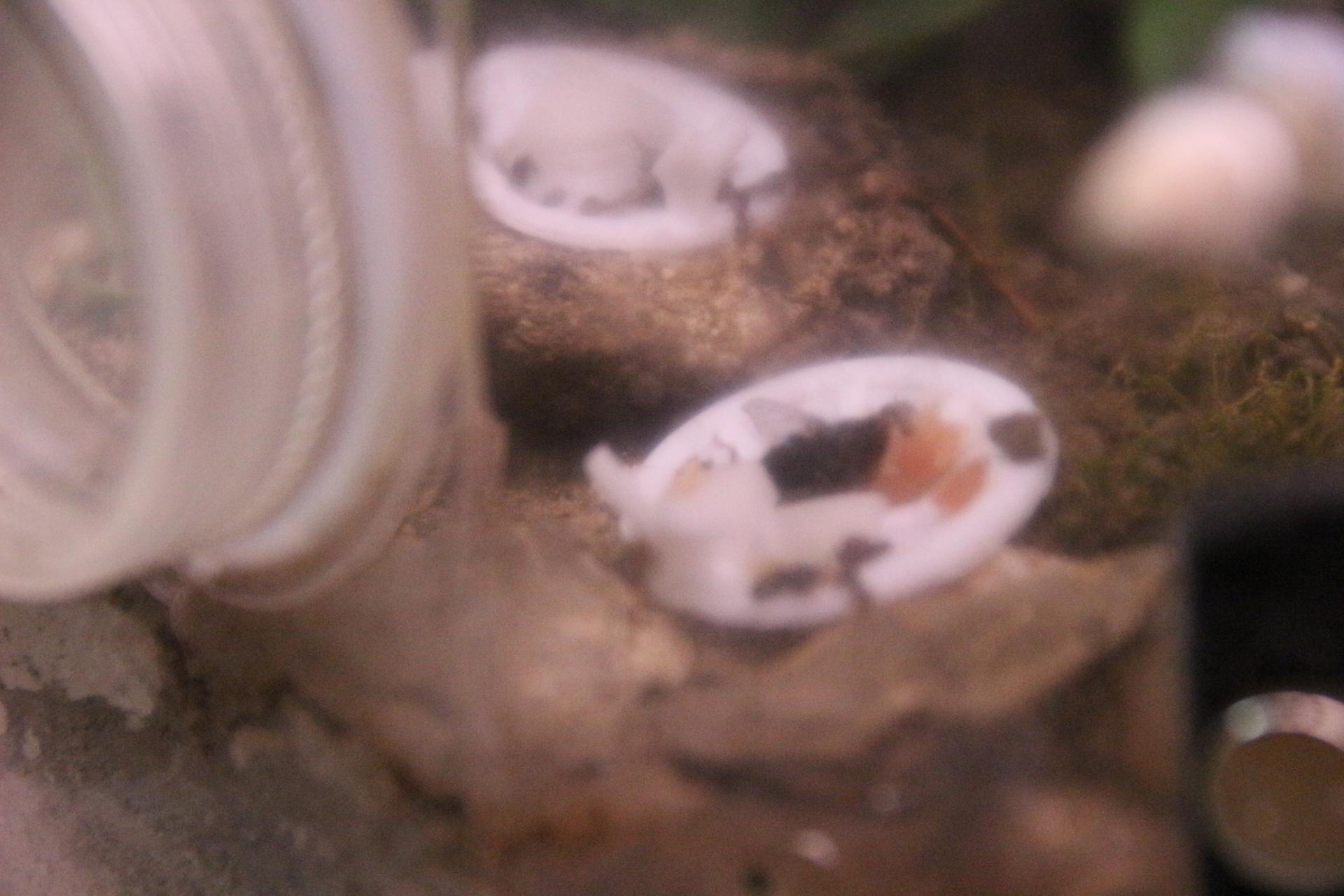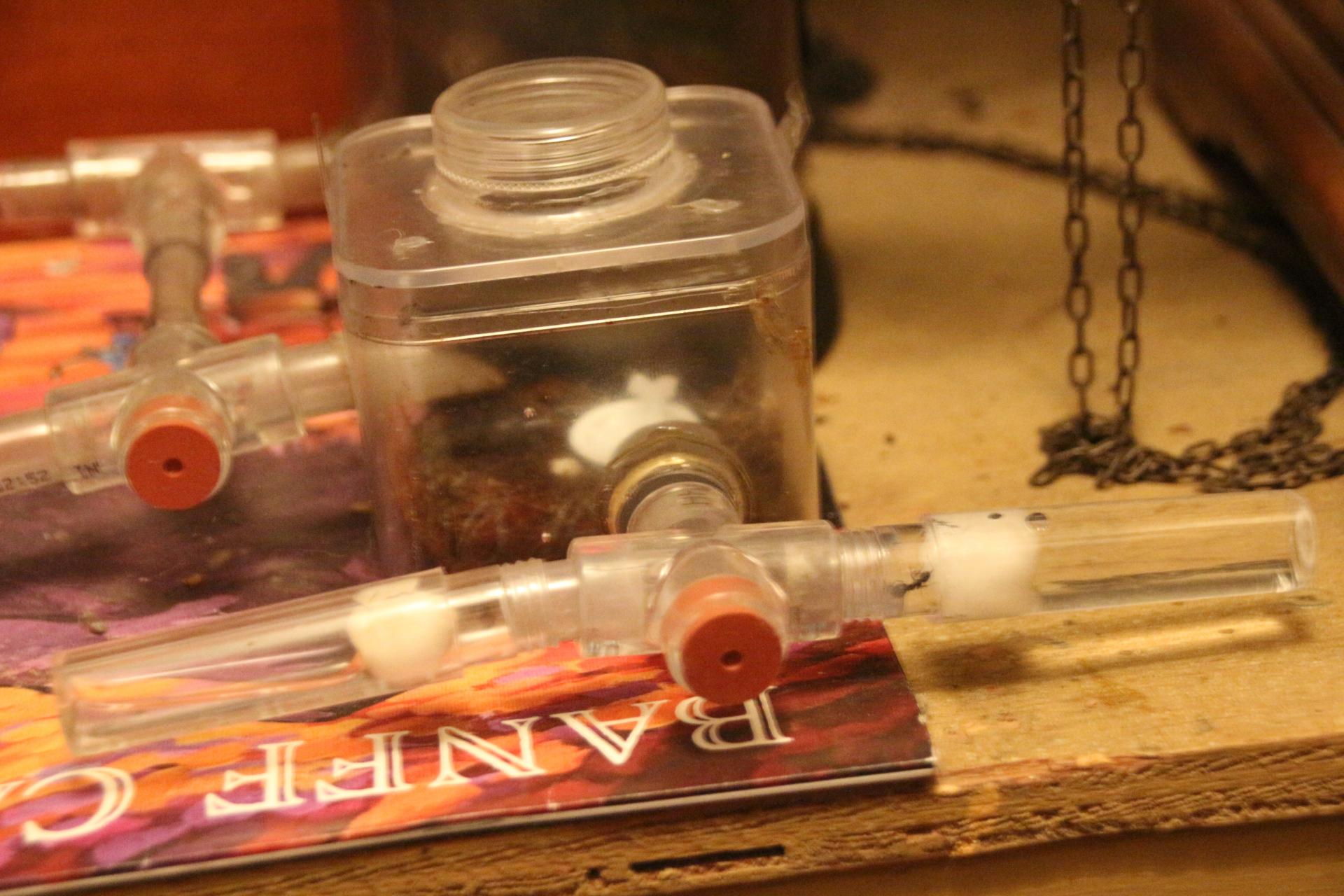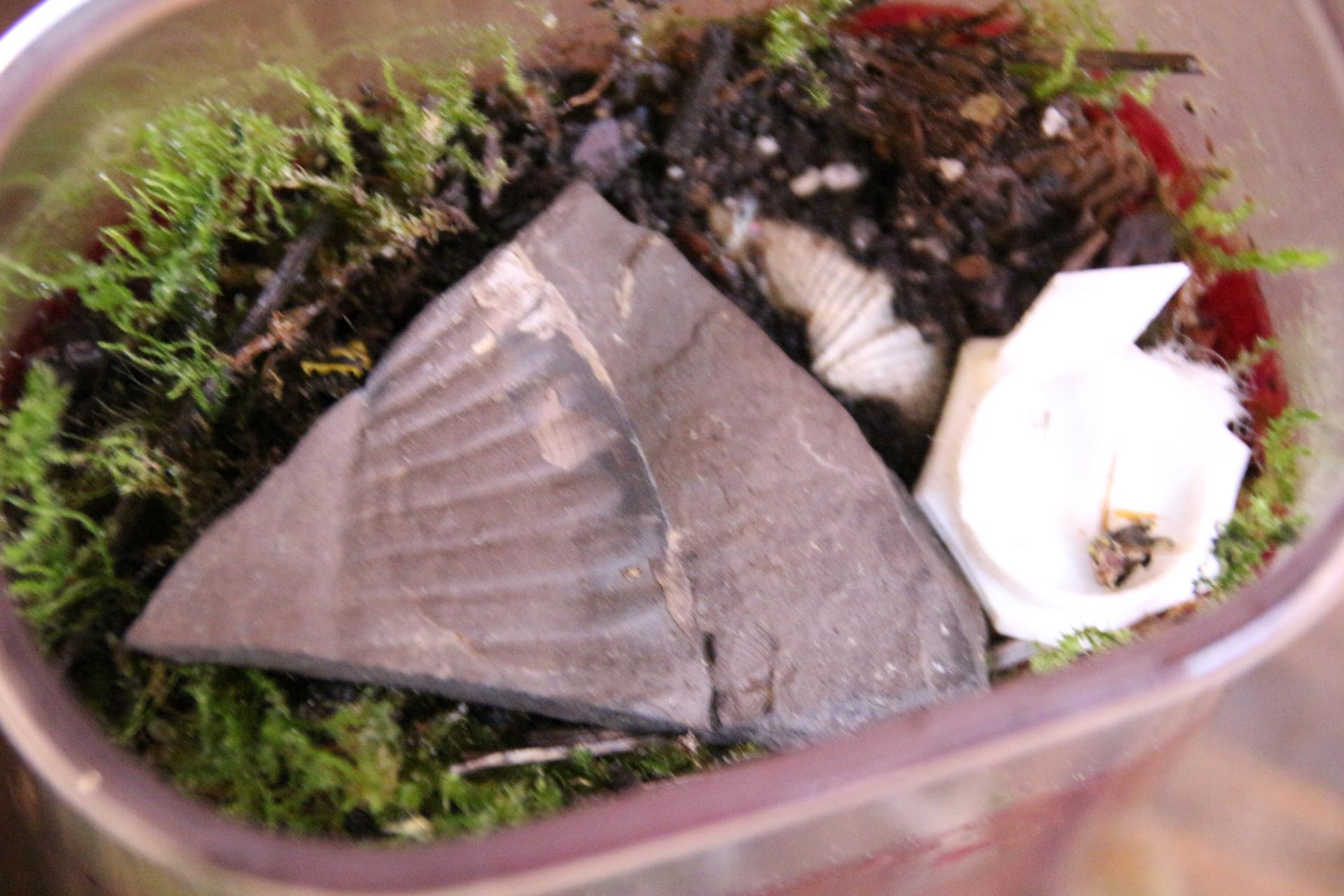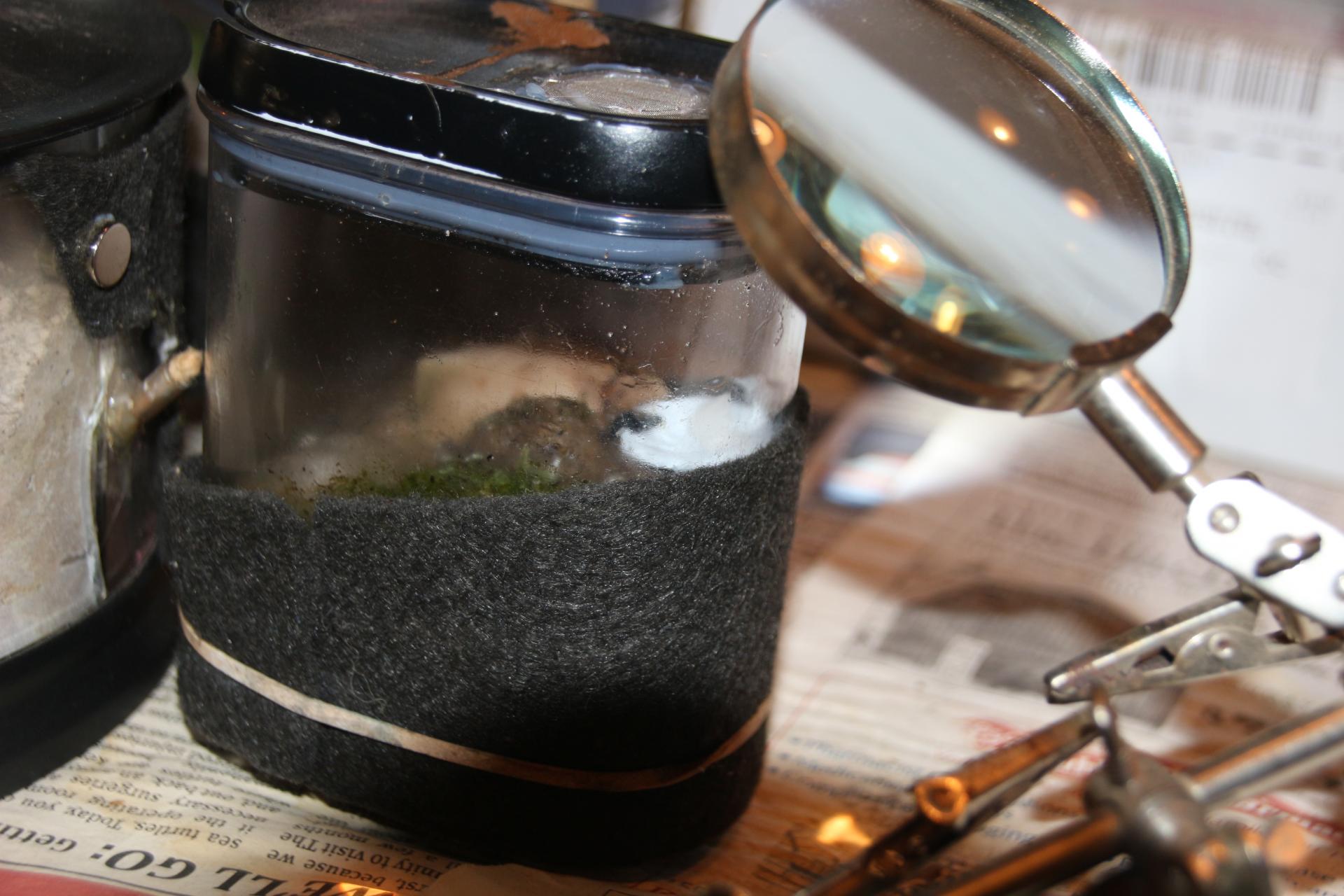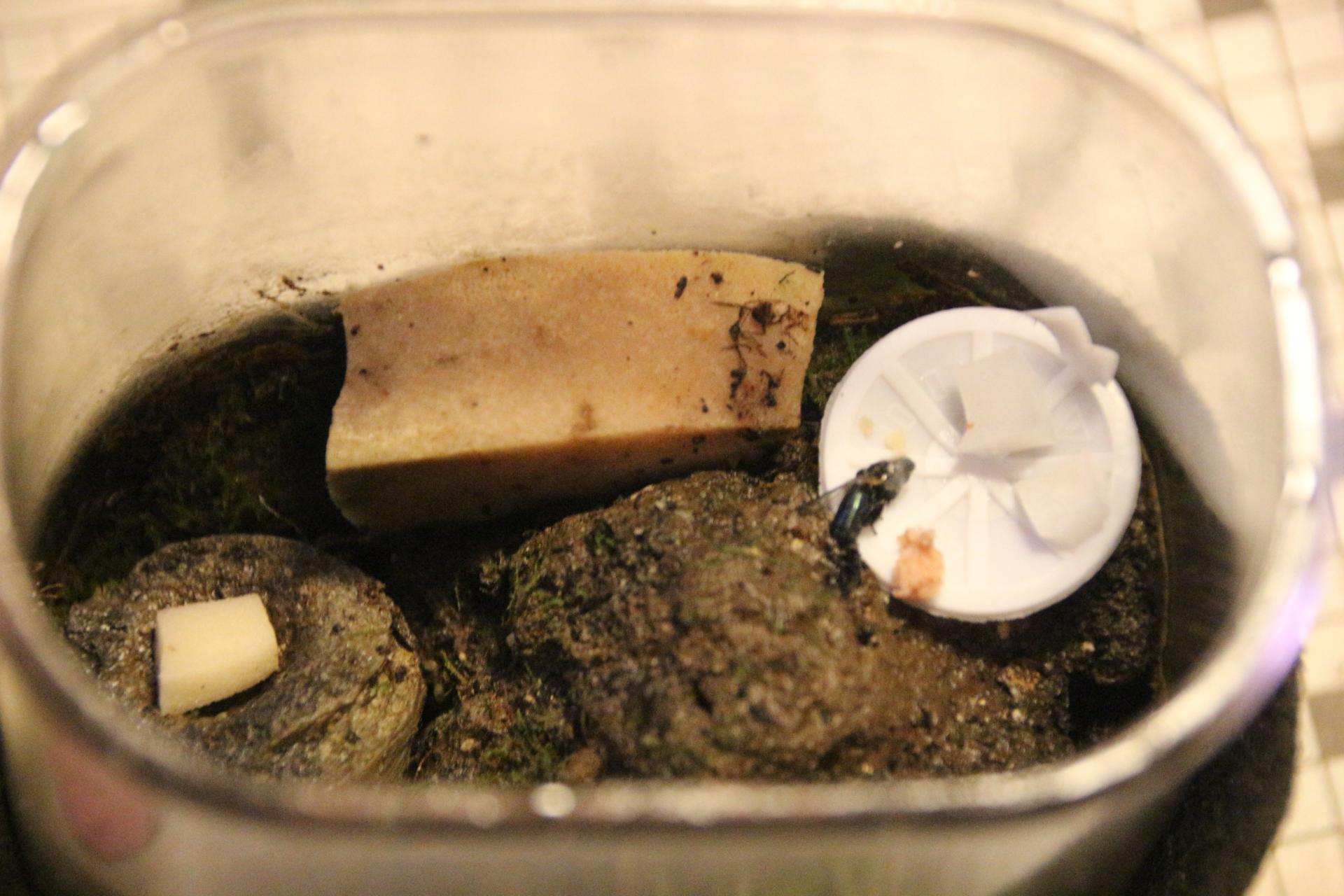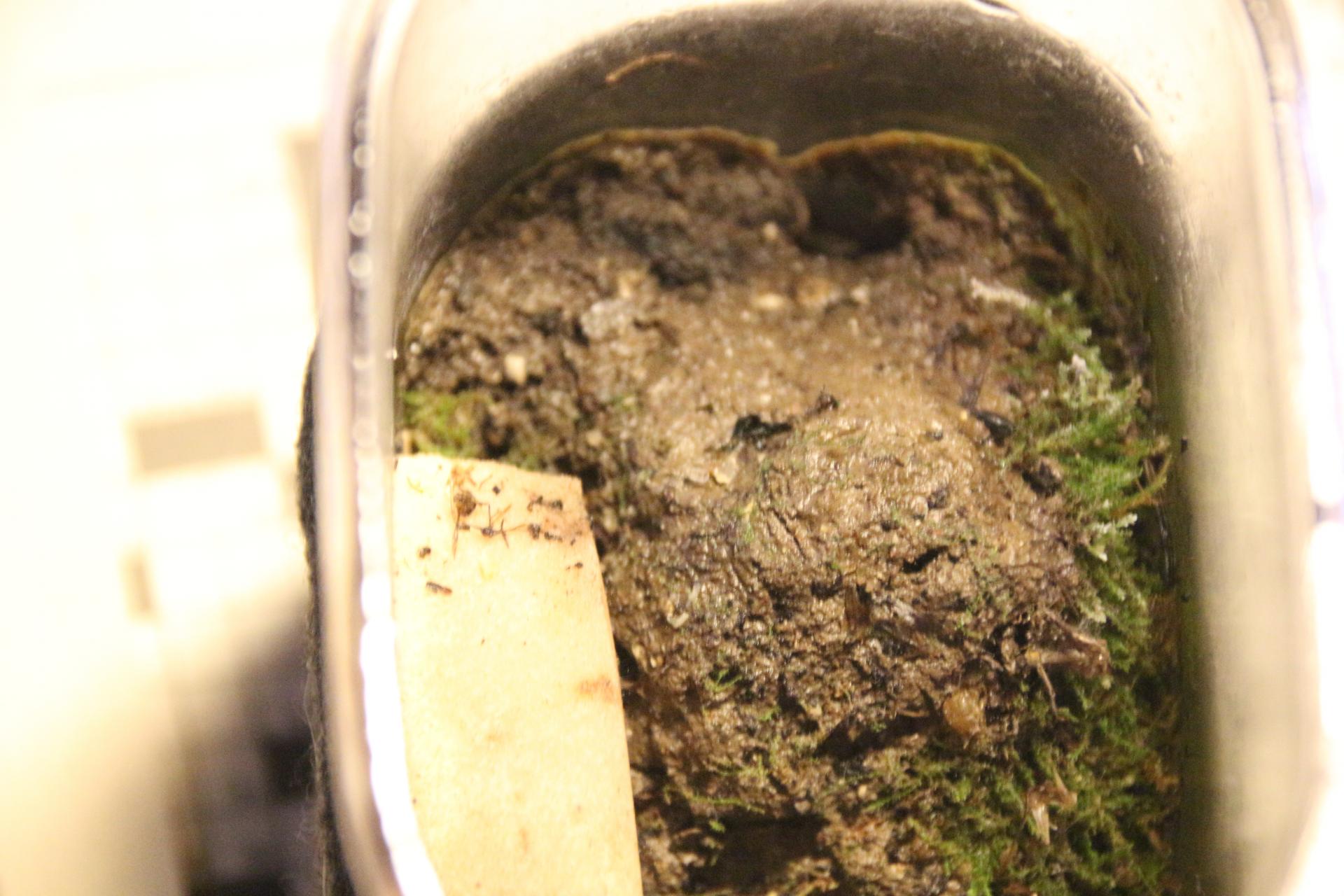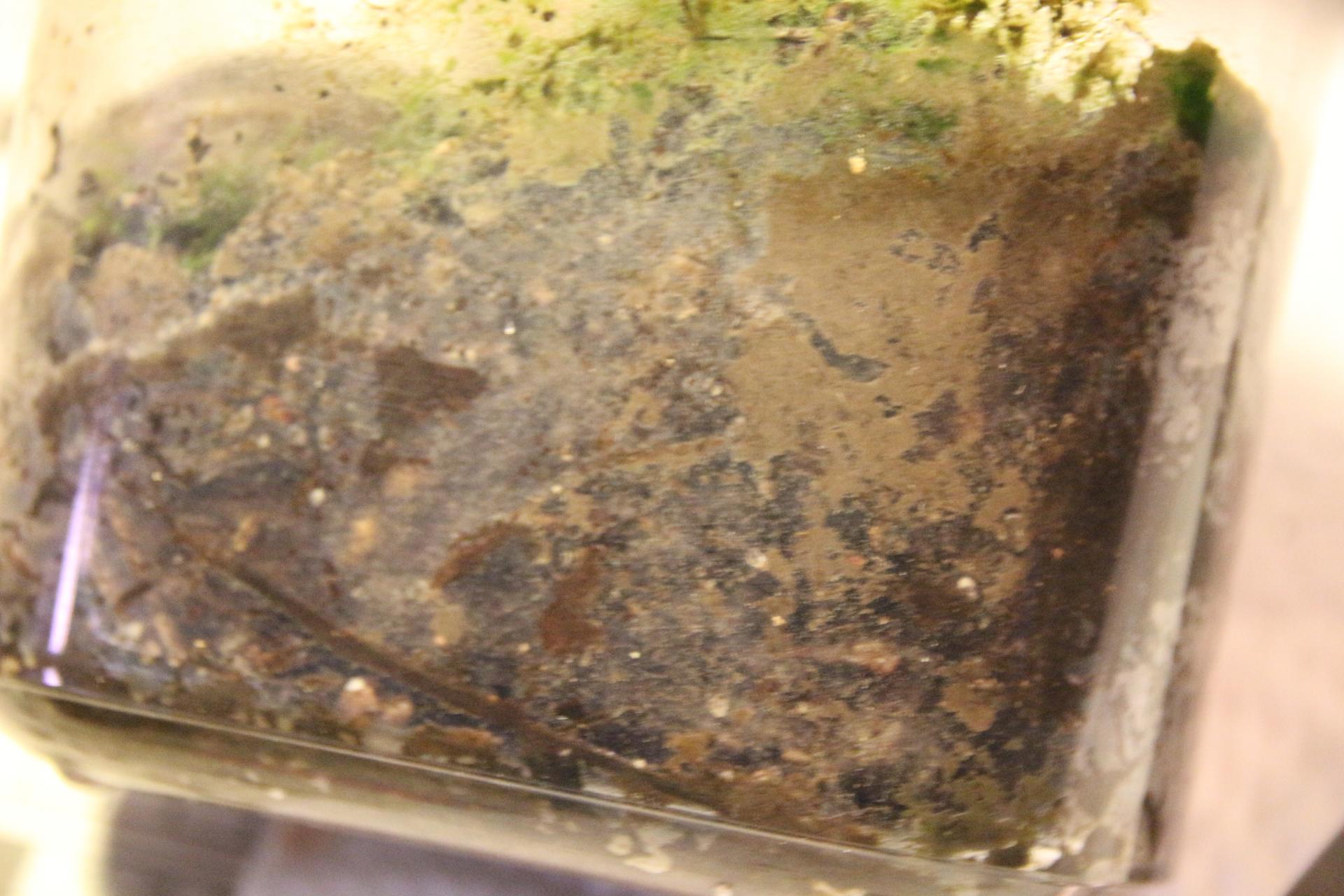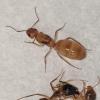Welcome to my Journal
I hope you enjoy and learn from my Journal entries. I welcome all comments and questions, so I can learn too. In this journal I intend to continue previous journals in one place where I can update the status of my colonies and cover topics of interest to me and hopefully to you.
Status of my Afflicted Colonies
Last year (2023) many of my colonies became afflicted with a disease that wiped out most of the workers and reduced the affected colonies to a queen, brood and a few nurse ants. Most of the colonies simply dwindled and died or simply disappeared. All of my small Myrmica colonies died out and I lost a few Lasius americanus colonies as well.
Since then, I've implemented a more rigorous sanitation program with instrument cleaning using 99% isopropyl alcohol between the feeding of each colony. Different instruments are used for feeding and waste removal. I isolated and destroyed two colonies this season that seemed to be affected. On the whole, most of my colonies are doing very well.
My Camponotus pennsylvanicus Colonies
None of these colonies seemed to be affected by disease last year and have come through diapause, spring and early summer very well. Most are incubating a large batch of cocoons at the moment.
I think there's something to be learned from the Greenhouse colony that suffered an extreme population decrease last spring. I believe the reason for their decline was because of something very much like freezer burn. I overwintered them in a garage where it seldom goes above freezing in the winter. Camponotus can withstand freezing temperatures so I thought they would be all right. What I didn't realize was that, even though I made sure there was always snow or ice in their nest, the loss of moisture was just too much for some of them in the open nesting chamber they were housed in. In nature, they overwinter packed into small chambers where their moisture is absorbed by the surrounding wood and they don't dry excessively. I expect the ants on the outside of their winter huddle suffered the most, but luckily the queen and some workers in the middle survived and are slowly bouncing back from this set back. They are now housed in an old piece of wood and are happily making chambers and brood.
The Chicken Coop colony has continued to be my most productive Camponotus colony.
My other three colonies are doing very well, increasing in size. My dilemma now is, how big do I want these colonies to get? I want to keep some of them small enough to be able to take them for demonstrations, so population control has become necessary. With two of the colonies, I've waited until there's a lot of ants in the outworld hanging out, doing nothing, or more likely, climbing walls and attempting escape. On two separate occasions I removed 60 ants each time from one colony and the difference in their behavior was dramatic. No more climbing, hanging out, or escape attempts. All the ants left were busy again with the business of raising brood. The "Chicken Coop" colony will be going on tour to the Bee Club I belong to with a couple of other colonies in a couple of weeks, so I want to keep them down to a manageable size.
Tetramorium immigrans Colonies
This is the fourth season that I've kept two of these colonies, and they continue to entertain me. Both colonies have suffered some population drops, mostly due to escapes when I was away on vacation. I realized from this, that these colonies can suffer significant losses and still bounce back.
I've removed workers from both these colonies this year, keeping them to a manageable size for the formicarium they're housed in. Always active, they eat almost anything, and create very few problems for me. Mostly a pleasure to keep. I also have a founding colony that seems to be struggling a little.
Brachymyrmex depilis Colony
I can't tell you how delighted I am to be able to tell you that I finally feel confident enough to say that I have a colony of Brachymyrmex depilis ants!! It's taken four queens and three years of seeing very few if any ants to finally have one colony that now regularly feed from protein that I give them and appear to be raising brood and increasing. These queens were all started in natural setups, and I've never seen them since. For months, and years, I faithfully fed and watered them almost every day until one by one they failed, and I was left with this one colony that this spring and summer have been an absolute delight. If you're not familiar with these ants, they are extremely small, light colored, and very shy and reclusive. I use a 3.5x magnifying glass to watch them take food from their tray or scour out the insides of a fly carcass. I've always liked small things, but these guys are amazing.
Lasius neoniger Colony
I purchased two Lasius niger queens with workers and one Lasius neoniger queen with workers this spring.
I put one of the niger queens and workers in a modest sized formicarium and the other queen and workers were put into a relatively small cube. I should say that both colonies moved in of their own accord after being connected while in the test tube. For some inexplicable reason, both colonies seemed to lose workers right from the start and they never seemed to make the transition from test tube to formicarium.
The neoniger queen and workers on the other hand never looked back. I connected them to a similar setup as the niger queens, but instead of moving completely out of the test tube, they set up a founding type chamber in the connector I had used for the test tube. I was able to remove the test tube and they stayed in the connector where they grew in numbers and then moved into the test tubes that make up the nesting chambers in this setup. So far they're doing great and I hope their new home will be big enough to last the season.
Crematogaster Colonies
I purchased two Crematogaster queens this spring and both arrived with eggs and larvae. The second queen arrived a considerable time after the first, so has gotten off to a slower start.
Queen 1 very quickly raised four nanitics and I connected them to the formicarium pictured above. I think you can just see the queen on the left side of the bottom test tube. They started out nesting on the hydration sponge. They seem to like all foods I have given them and they're very attentive to their brood.
Queen 2 had a slower start as her first two nanitics didn't seem to eclose properly. Eventually the queen destroyed them, so I put my hopes in the brood that was still left, covered the test tube, and left them in the dark for two weeks, just in case my disturbing them was the cause of the eclosing problem. To my great delight, two spunky little nanitics greeted me when I next checked their tube. I'm feeding them in the test tube right now, but I can see that they'll need a feeding chamber at least before too long.
I hope you enjoyed this inaugural entry in my Journal. Questions and comments are welcome.
RPT





